Topic Question Set
Q 1
:
When a polaroid sheet is rotated between two crossed polaroids, the transmitted light intensity will be maximum for a rotation of [2024]
60°
30°
90°
45°
(4)
Let be intensity of unpolarised light incident on first polaroid.
Intensity of light transmitted from polaroid
be the angle between and polaroid
be the angle between and polaroid
(as and polaroid are crossed)
Intensity from second polaroid
Intensity from polaroid
will be maximum when sin
Q 2
:
A beam of unpolarised light of intensity is passed through a polaroid A and then through another polaroid B which is oriented so that its principal plane makes an angle of relative to that of A. The intensity of emergent light is [2024].
(1)
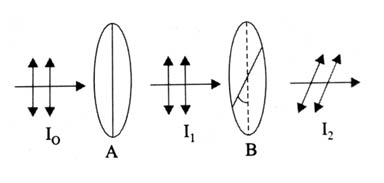
Q 3
:
When unpolarized light is incident at an angle of 60 on a transparent medium from air, the reflected ray is completely polarized. The angle of refraction in the medium is [2024]
30
60
90
45
(1)
By Brewster's law
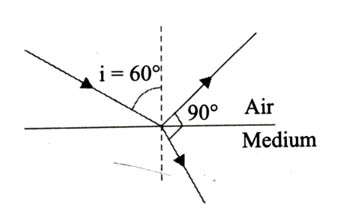
At complete reflection refracted ray and reflected ray are perpendicular.
Q 4
:
In a Young's double slit experiment, three polarizers are kept as shown in the figure. The transmission axes of and are orthogonal to each other. The polarizer covers both the slits with its transmission axis at 45° to those of and . An unpolarized light of wavelength and intensity is incident on and . The intensity at a point after where the path difference between the light waves from and is , is [2025]
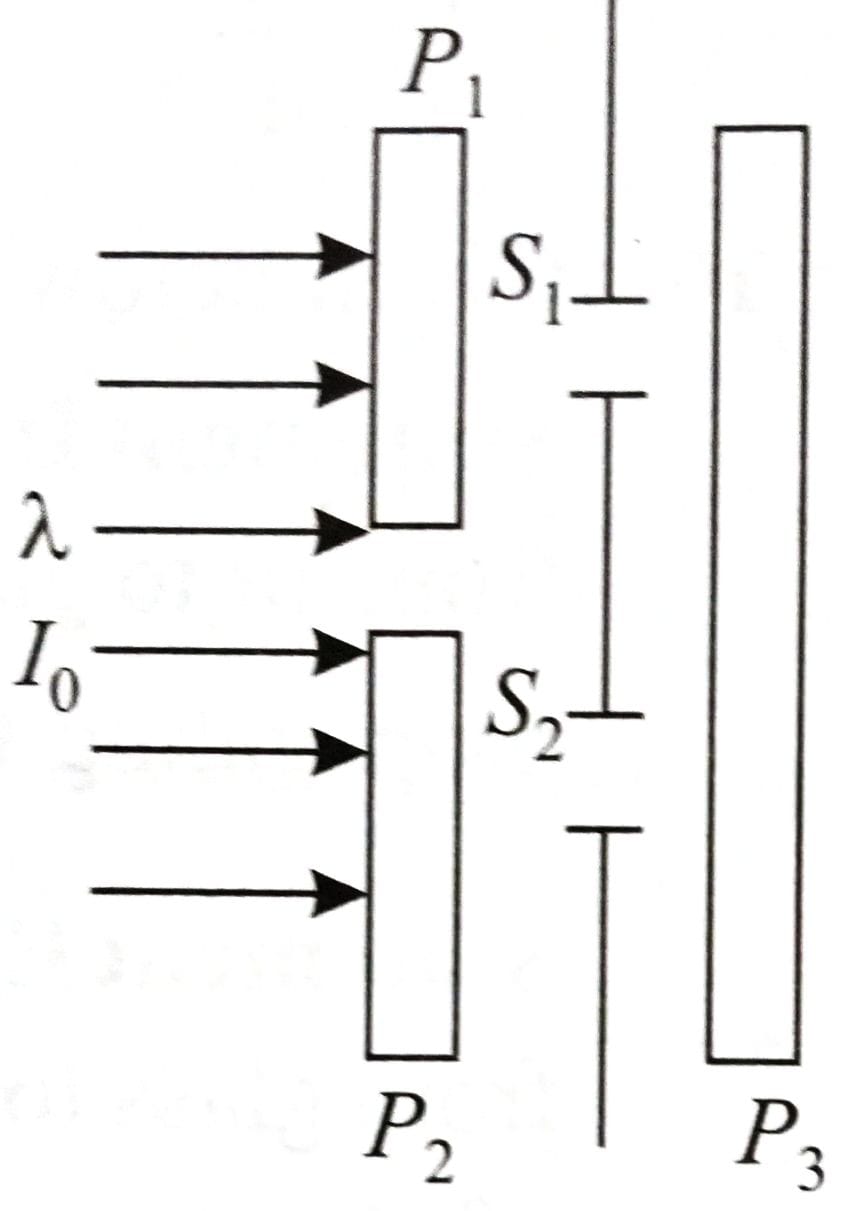

(1)
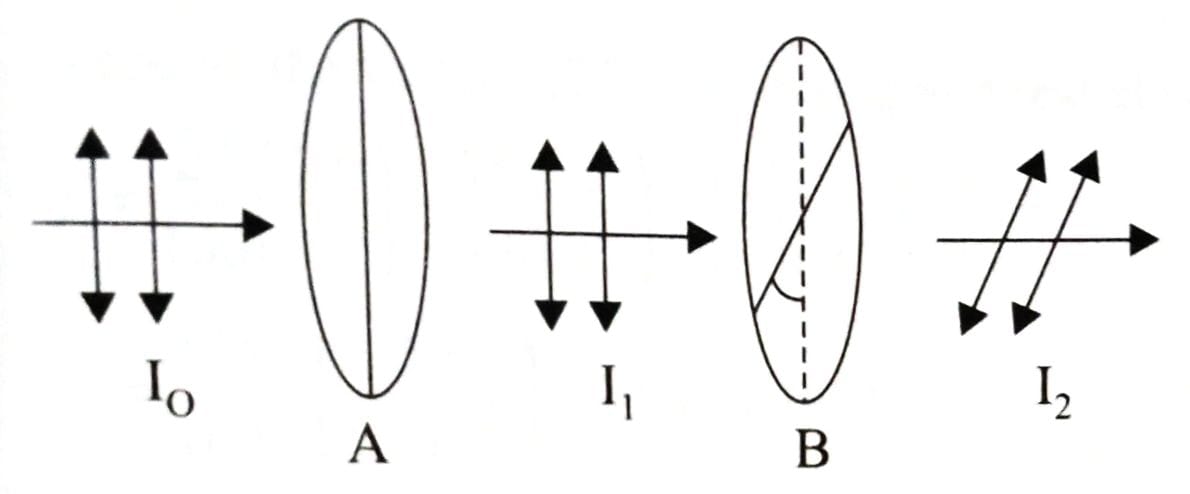
Q 5
:
Two polarisers and are placed in such a way that the intensity of the transmitted light will be zero. A third polariser is inserted in between and , at the particular angle between and . The transmitted intensity of the light passing through all three polarisers is maximum. The angle between the polarisers and is: [2025]
(1)
Through ,
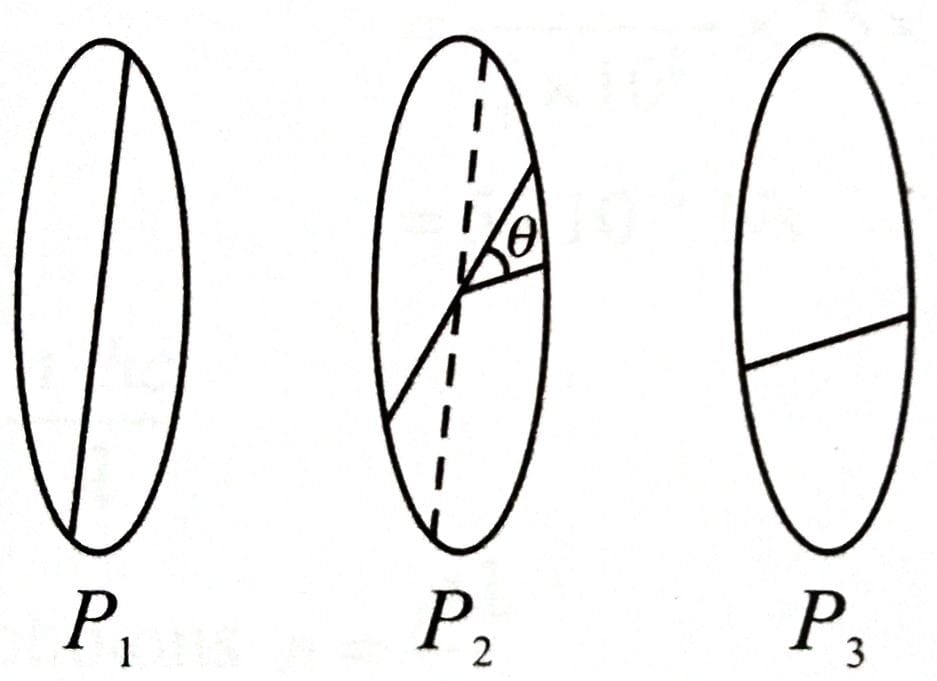
Through ,
So angle between and is
Q 6
:
Two plane polarised light waves combine at a certain point whose electric field component are , . Find the amplitude of the resultant wave. [2025]
(3)
Hence,

